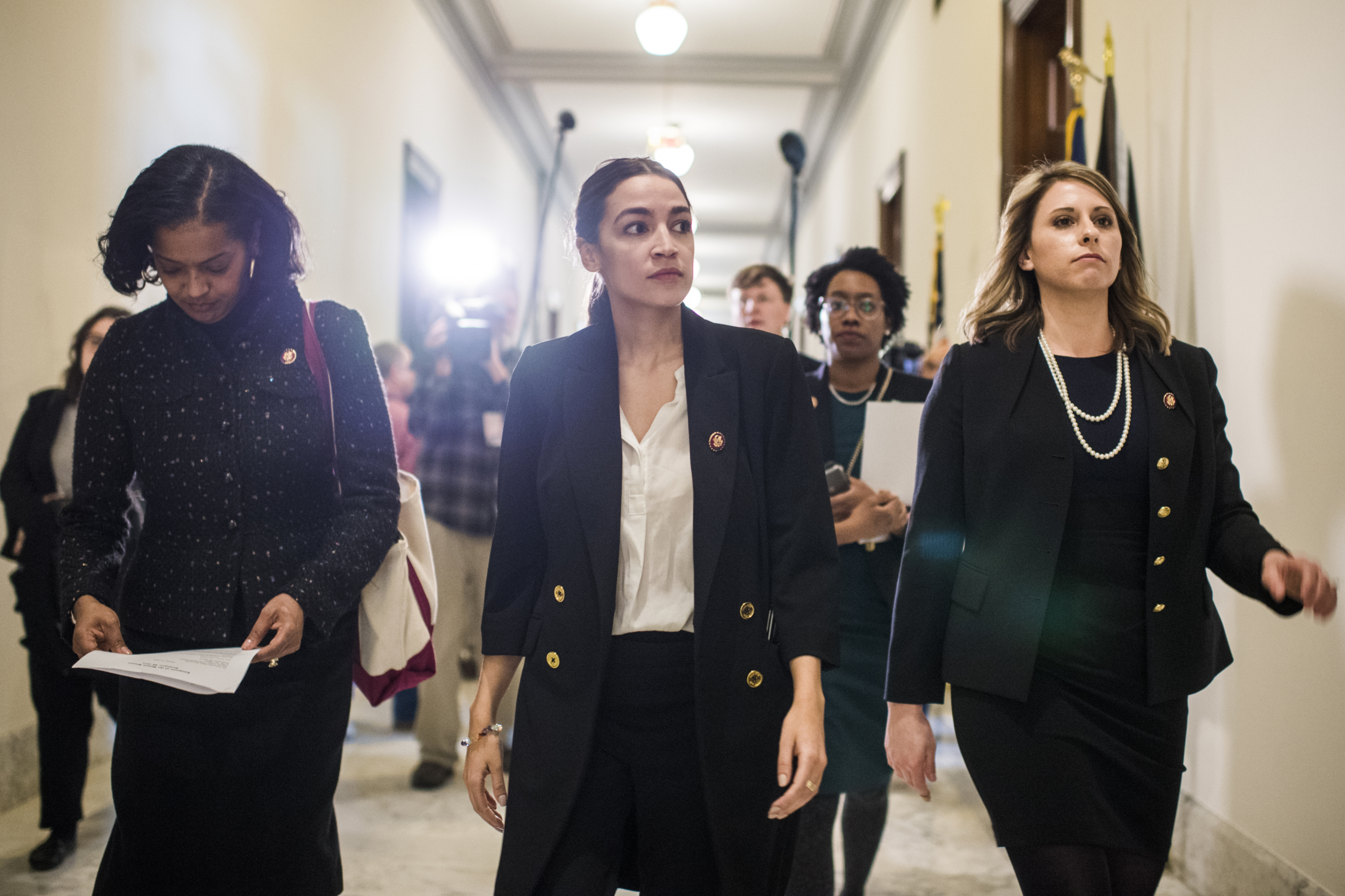Sign up for The Media Today, CJR’s daily newsletter.
Not since Barack Obama has the US seen as charismatic and visually savvy a political figure as Alexandria Ocasio-Cortez. Her energy, bringing her from waitress to elected official in the span of months, disrupted a Congress that’s been gridlocked for years, and her dexterity with the media has helped expand our view of lawmakers. Ocasio-Cortez is also a smart consumer of media, and often leverages coverage of herself in the name of her values and policies.
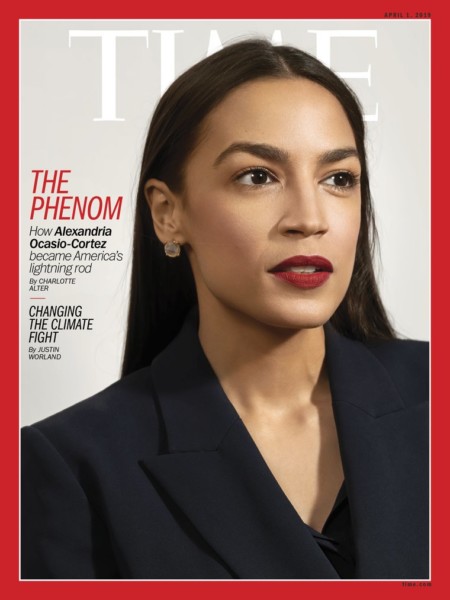
This month, for example, she used one of the most prominent magazine covers of her to date to address issues of race and visual language. After Time assigned art and fashion photographer Collier Schorr to do the portrait, Ocasio-Cortez made a very incisive observation about media, photography, and the representation of people of color:

RELATED: A portrait of Trump’s mental state by photojournalists
The campaign
Ocasio-Cortez’s feel for imagery, and her use of photography and video to tell her story, played a critical role in her bid for New York’s 14th congressional district, which began in late 2016. Although she was given virtually no chance of winning the crucial Democratic primary in the overwhelmingly Democratic district, her embrace of every citizen, and her walking the walk, proved infectious.
Some of the defining photographs of her campaign were taken by a young photojournalist, Jose Alvarado, Jr., a freelance photographer and childhood classmate who was granted broad access. Many of those images can be seen in a piece in Vice’s Broadly, published in June. Among the most distinctive include the now well-known, biographical image of the financially struggling Ocasio-Cortez working part-time at a restaurant in Union Square in New York:
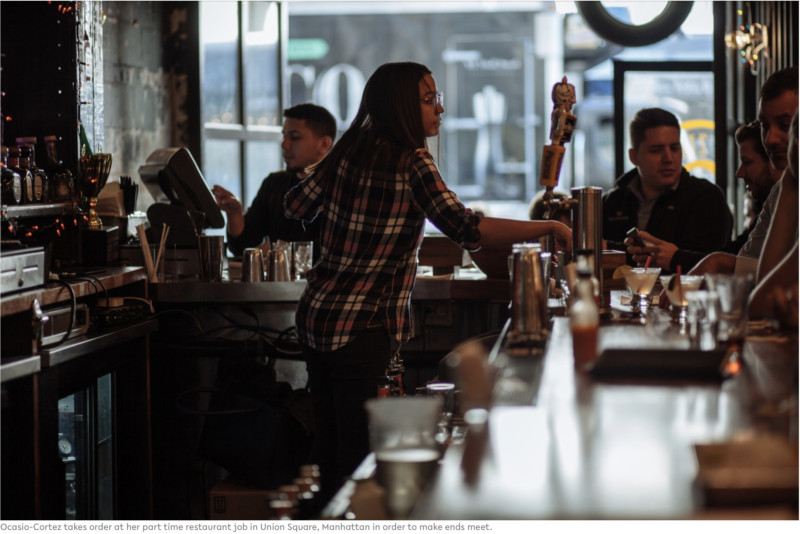
Alvarado was also there to capture the shock and disbelief of the upstart, as Ocasio-Cortez delivered a shattering defeat of Joe Crowley, the fourth ranked Democrat in the House of Representatives, in the Bronx on election night, June 27, 2018.
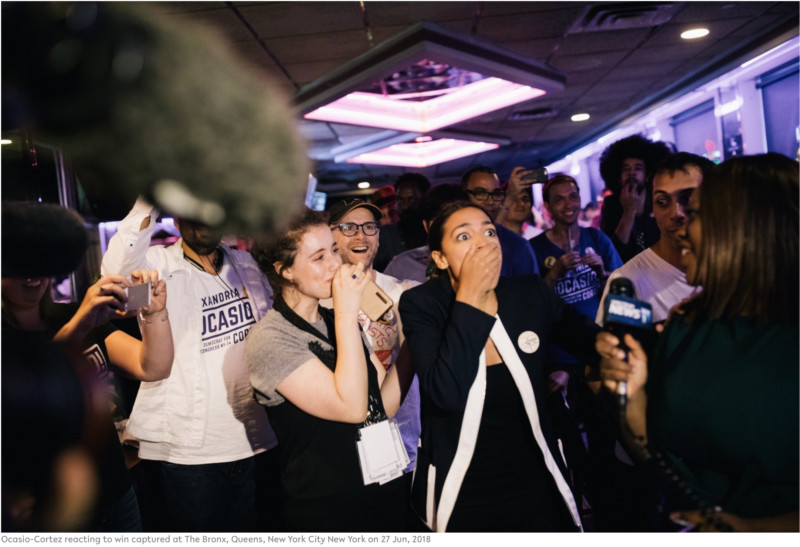
Ocasio-Cortez has also demonstrated a gift for the photo-op, as evidenced by this scene at the Tornillo migrant detention center in Texas.
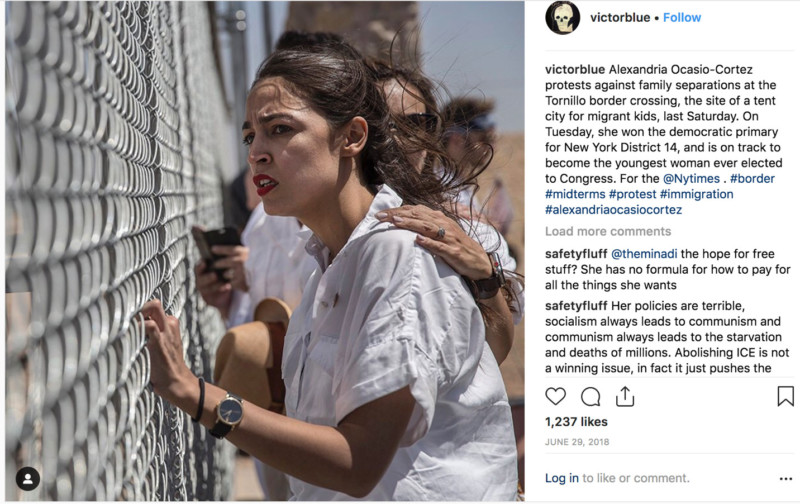
This photo was taken by Victor Blue for The New York Times just three days before the fledgling candidate’s primary victory. Because of her grip on the fence, because she could be inside the fence or outside, and because she and the people around her are dressed “uniformly” enough to be inmates, it makes for quite a display of empathy.
ICYMI: WaPo‘s tagline is “Democracy Dies in Darkness.” The paper published an op-ed that undermines that.
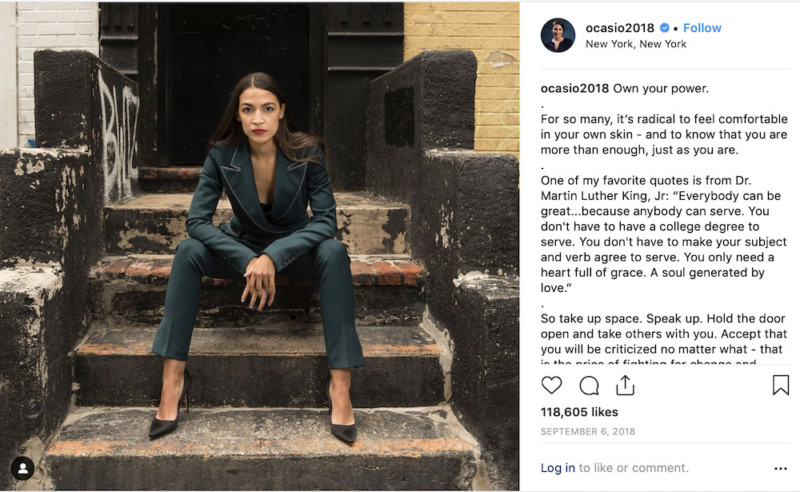
RELATED: Donald and Melania Trump’s relationship in photos
Ocasio-Cortez proudly posted the photo to her Instagram feed accompanied by an inspirational quote by Martin Luther King, Jr. about how “radical” it is “to feel comfortable in your own skin.” The photo might have modeled the message that, if she can make it, anybody in the Bronx can. But it remains to be seen how her idealism, going forward, plays against so much celebrity and cultural status.
In spite of the Interview hiccup, media photos of Ocasio-Cortez before and immediately after her primary and general election victory have been grounded in her pride and passion for her district.
Ocasio-Cortez’s new found political and cultural status was confirmed in October, almost four months after the primary win, when—rockstar meets rockstar—she was photographed by Annie Leibovitz for a Vogue profile.
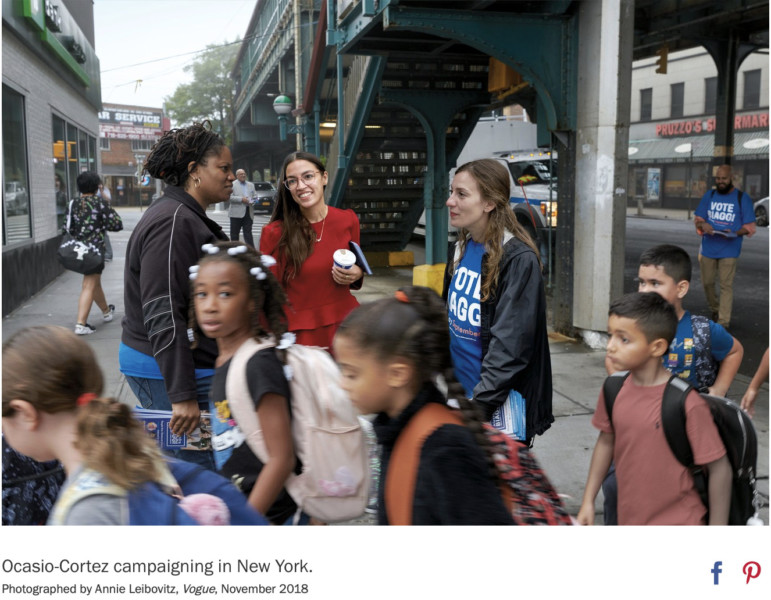
Having shot all kinds of politicians over her career, it’s telling to see how and where Annie Leibovitz locates and illuminates a notable figure. It is not surprising to see this street portrait; many photographers have captured Ocasio-Cortez under this exact same train trestle. (Not one but two scenes by photographer Elizabeth Herman from the same location appear in this Times post-election story.)
The photo frames Ocasio-Cortez in her Bronx neighborhood, the activist at heart already encouraging another candidate’s young campaign workers. The passing glance of the Black school girl adds a nice element. Reading from foreground to background, the photograph can almost be seen in terms of the develop from youth, to volunteer, to elected representative—a path that Ocasio-Cortez champions as possible for anyone.
In the nation’s eye
The visual narrative surrounding Ocasio-Cortez naturally shifted after she arrived in Washington and assumed her role as a member of Congress. One thing didn’t change, however: her social media skill and her visual savvy.
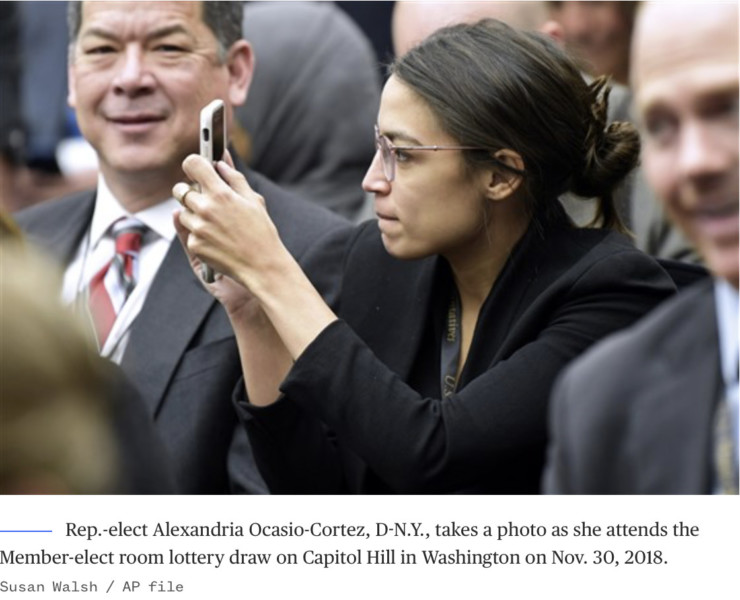
This photo was taken by Susan Walsh for AP while Ocasio-Cortez and her colleagues were undergoing new member orientation. The photo appears in an NBC article lauding her as a social media expert and a Democratic asset, detailing how she had already held social media “how-to” seminars with her colleagues.
Ocasio-Cortez’s communication style has also been surprisingly intimate. The same approach that led her to victory in her campaign has opened a window onto the life of a legislator and the workings of Capitol Hill.
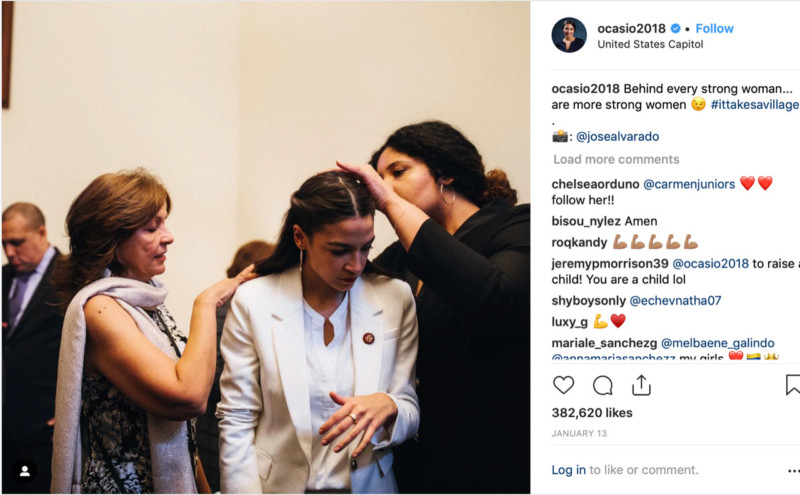
This photo, also by Alvarado, was circulated by the new representative on Twitter and Instagram. It was taken in her Congressional office as she was surrounded by supporters who made the five hour bus trip from The Bronx. It shows her mom putting her braids back in place before Ocasio-Cortez is off to take the oath of office.
Early days in Congress
Where Ocasio-Cortez draws the most attention is in her role as an activist and a disruptor, in the sense that she and others think Capitol Hill is in need of the shake up. Given the power of provocation, it’s also the activity that draws the most attention.
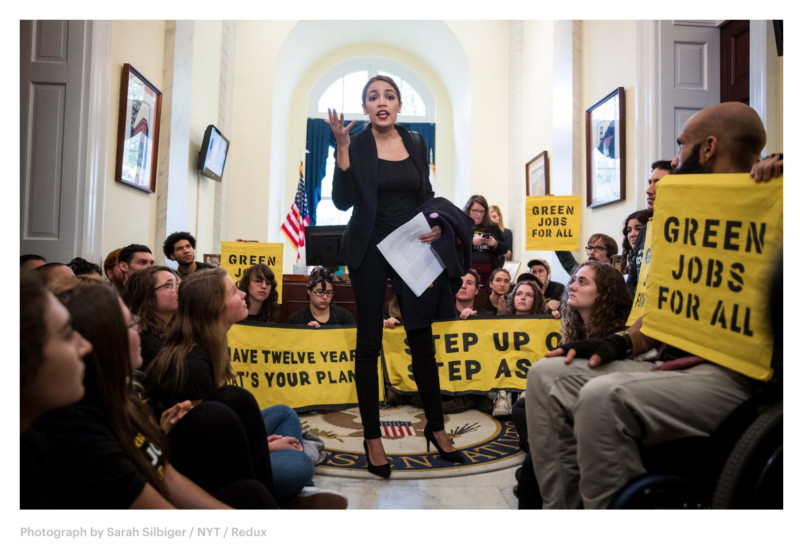
Ocasio-Cortez certainly fed that perception in her early days on the Hill, most visibly by joining a group of students holding a sit-in in House Speaker Nancy Pelosi’s office in support of the Green New Deal. This shot, taken by Sarah Silbiger for the Times, was also widely covered by the photo press. In challenging Pelosi, Ocasio-Cortez established herself as a champion of the initiative, as well as a force to be reckoned with, visual and otherwise.
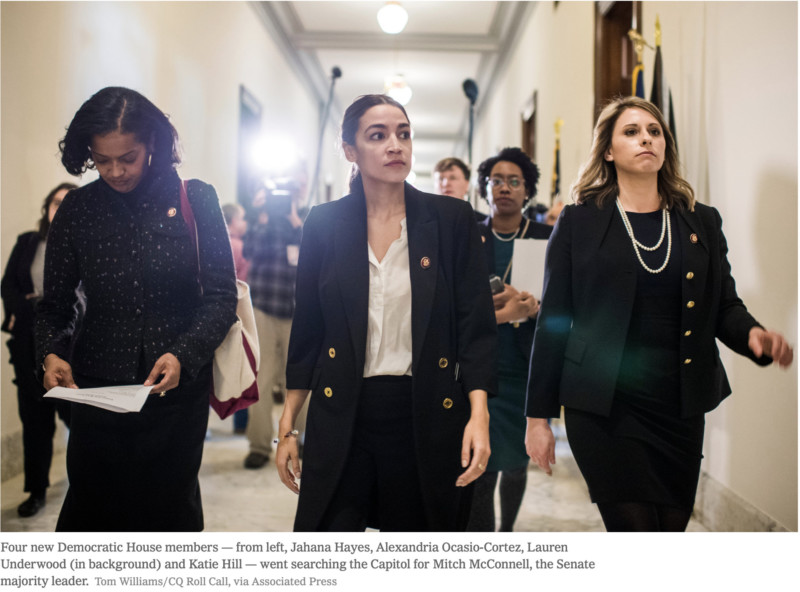
This photo by Tom Williams was also published in the Times. In this case, we again see her taking it to the opposition in the most visible way. After Donald Trump shut down the government and Mitch McConnell, the Senate majority leader, seemed to go into hiding, many Democrats, including the new female members, very publicly sought him out, driven by the hashtag: #WheresMitch?
If there’s one term used to describe Ocasio-Cortez more than any other, it’s “lightning rod.”
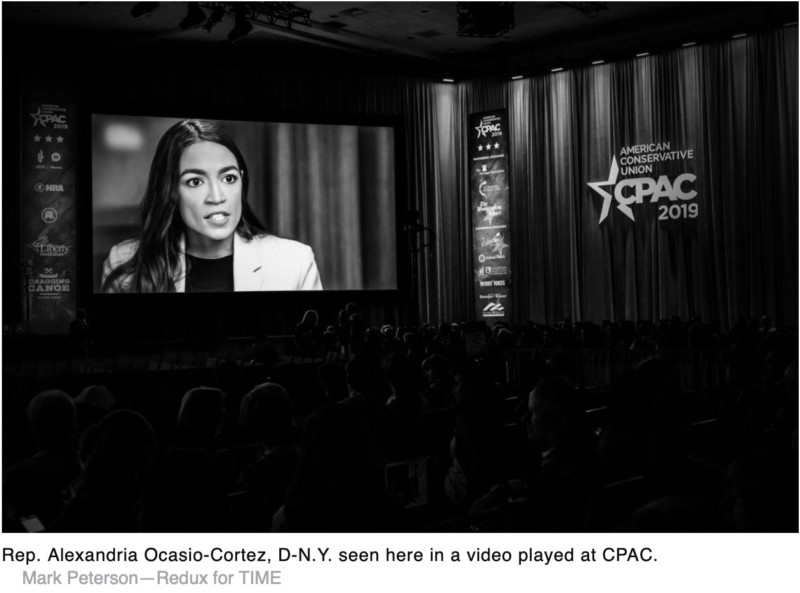
Freelance photojournalist Mark Peterson documents this perfectly. The shot, from a photo story published at Time, shows an interview clip of the outspoken Ocasio-Cortez in a video being screened before several thousand conservatives at the recent Conservative Political Action conference in Maryland.
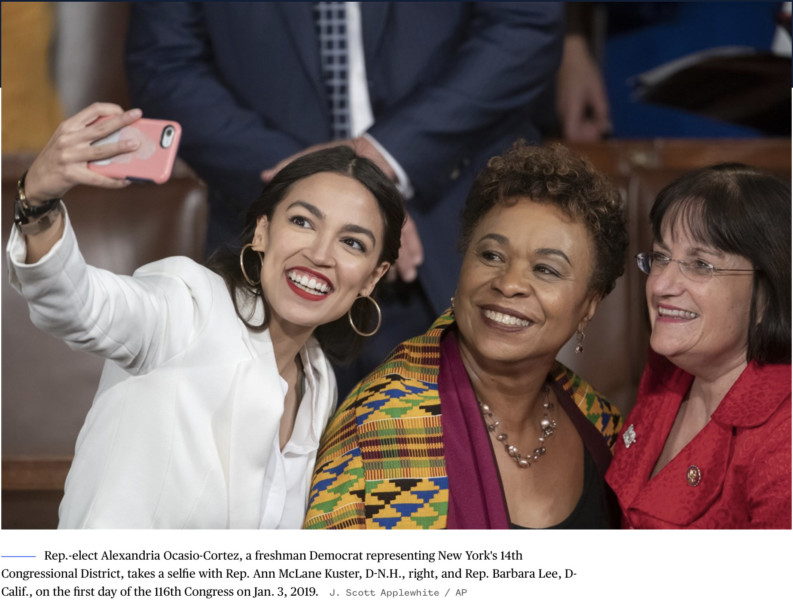
As much as she stands out or is accused of seeking the limelight, however, Ocasio-Cortez has proved as content being one of many. That’s especially true being part of the wave of Democratic women elected to Congress in the 2018 midterm election. This photo, of Ocasio-Cortez taking a selfie with her new colleagues, was made by AP’s J. Scott Applewhite on the first day of her first session.
Increasingly, the visual story of Ocasio-Cortez is coalescing around her commitment to becoming a skilled and effective legislator. You can see this clearly through the eyes of the photo press assigned to Capitol Hill.
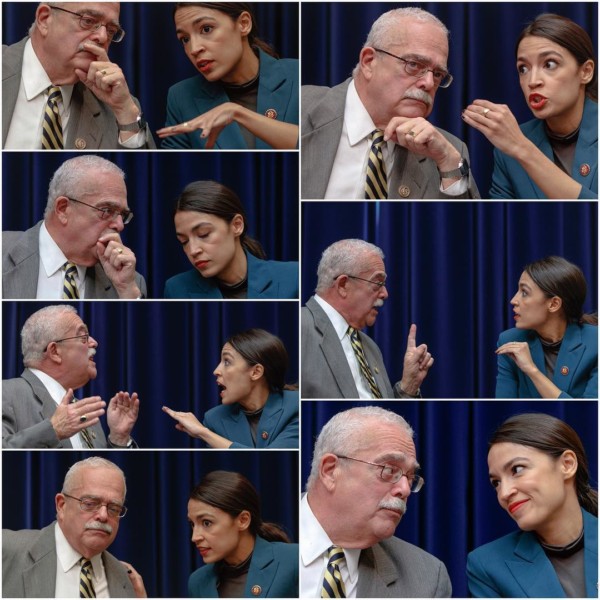
She started out amongst a chorus of critics calling her an outsider, a lone wolf, an extremist. This montage was one of the earliest signs from the Beltway saying otherwise. It was created by photojournalist Tom Brenner, who shot these committee scenes for the Times.
The array, which he composed and posted to his Instagram feed, captures Ocasio-Cortez’s engagement with fellow Democratic Congress member, Gerry Connally. The example of legislative comity (which, Ocasio-Cortez, herself, likened to a “road trip buddy comedy”) not only counters many of the negative stereotypes, but aptly embodies still another asset she deftly deploys. That’s her sense of humor.
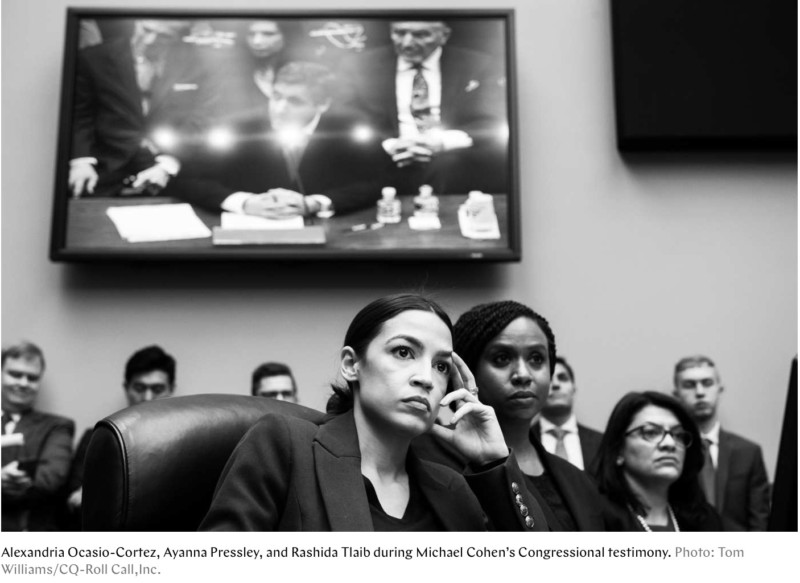
Most notably, she received kudos for her questioning of Michael Cohen during his high profile appearance before the House Oversight and Reform Committee. Alongside her freshman colleagues, the telegenic and intensely focused Ocasio-Cortez more than holds her own in this artful juxtaposition with Cohen taken by Roll Call’s Tom Williams.

Reflecting Ocasio-Cortez’s passion for service, the photo above by Krisanne Johnson, a New York photographer, is the culmination of many impassioned photographs with constituents posted during Ocasio-Cortez’s campaign. It’s a shot of the congresswoman with her staff in her district office in Jackson Heights.
Certainly, the picture is standard fare. With almost each new scenes that is published, however, you get the sense that her passion for legislating, for her district, and for all the wonky business of serving in Congress is, for Ocasio-Cortez, the real thing.
RELATED: 11 images that show how the Trump administration is failing at photography
Has America ever needed a media defender more than now? Help us by joining CJR today.



